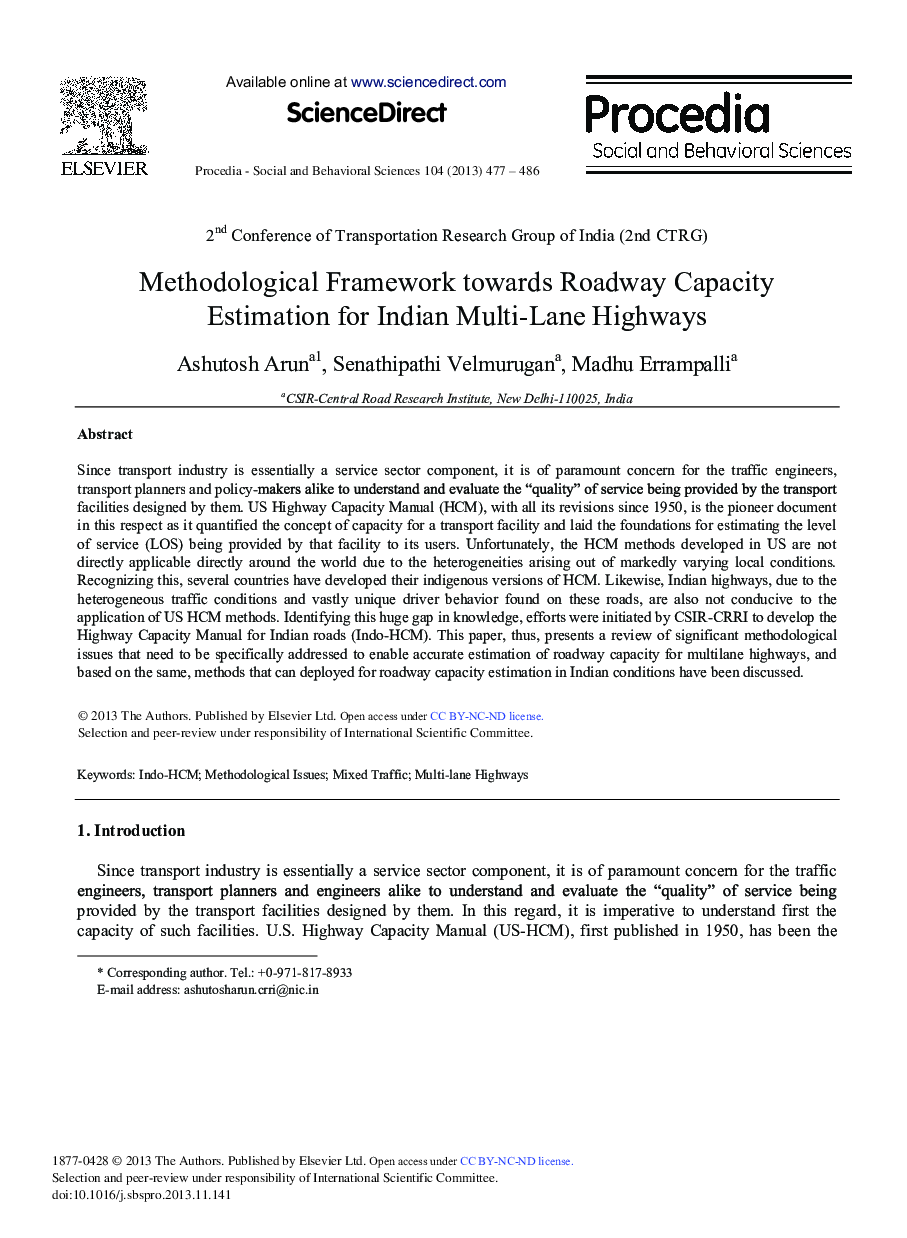| Article ID | Journal | Published Year | Pages | File Type |
|---|---|---|---|---|
| 1118036 | Procedia - Social and Behavioral Sciences | 2013 | 10 Pages |
Since transport industry is essentially a service sector component, it is of paramount concern for the traffic engineers, transport planners and policy-makers alike to understand and evaluate the–quality‖ of service being provided by the transport facilities designed by them. US Highway Capacity Manual (HCM), with all its revisions since 1950, is the pioneer document in this respect as it quantified the concept of capacity for a transport facility and laid the foundations for estimating the level of service (LOS) being provided by that facility to its users. Unfortunately, the HCM methods developed in US are not directly applicable directly around the world due to the heterogeneities arising out of markedly varying local conditions. Recognizing this, several countries have developed their indigenous versions of HCM. Likewise, Indian highways, due to the heterogeneous traffic conditions and vastly unique driver behavior found on these roads, are also not conducive to the application of US HCM methods. Identifying this huge gap in knowledge, efforts were initiated by CSIR-CRRI to develop the Highway Capacity Manual for Indian roads (Indo-HCM). This paper, thus, presents a review of significant methodological issues that need to be specifically addressed to enable accurate estimation of roadway capacity for multilane highways, and based on the same, methods that can deployed for roadway capacity estimation in Indian conditions have been discussed.
